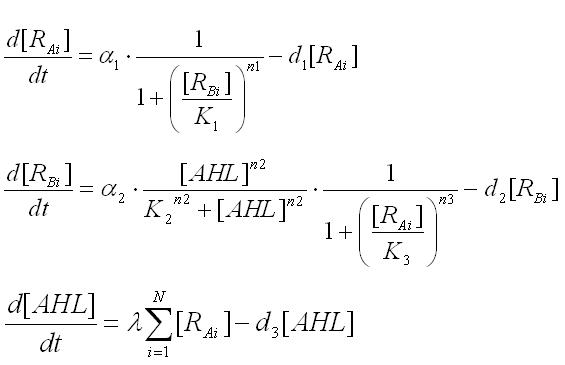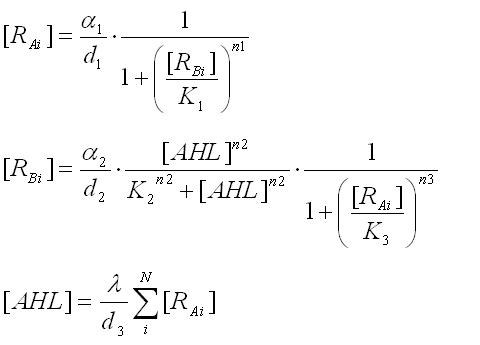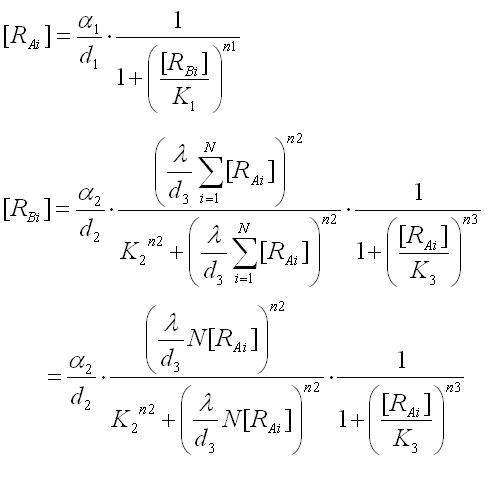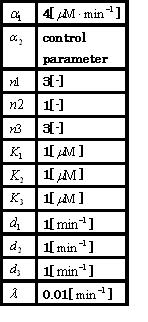Tokyo/Formulation/4.population model
From 2007.igem.org
(Difference between revisions)
| Line 2: | Line 2: | ||
<br>[[Image:expression4-1.jpg|400px|none|thumb|Ex4-1]] | <br>[[Image:expression4-1.jpg|400px|none|thumb|Ex4-1]] | ||
| - | + | where N indicates the number of the cells. | |
| - | + | ||
<br>In the steady state,time derivatives are zero.As a result,the nullclines of this system were derived as | <br>In the steady state,time derivatives are zero.As a result,the nullclines of this system were derived as | ||
<br>[[Image:expression4-2.jpg|400px|none|thumb|Ex4-2]] | <br>[[Image:expression4-2.jpg|400px|none|thumb|Ex4-2]] | ||
| + | and then substitute the third equation into the second | ||
| - | + | <br>[[Image:expression4-3.jpg|400px|none|thumb|Ex4-3]] | |
| - | <br> | + | [[Image:parameter4-1.jpg|right|thumb|150px|Table4-1]] |
| - | [[Image: | + | |
| - | + | ||
| - | + | ||
<br>To analyze the equations, the values in the right table were used.The phase plane are shown in Fig● | <br>To analyze the equations, the values in the right table were used.The phase plane are shown in Fig● | ||
Revision as of 03:17, 24 October 2007
Next, to consider the number of cells, the differential equations for multiple cells were given as
where N indicates the number of the cells.
In the steady state,time derivatives are zero.As a result,the nullclines of this system were derived as
and then substitute the third equation into the second
To analyze the equations, the values in the right table were used.The phase plane are shown in Fig●



